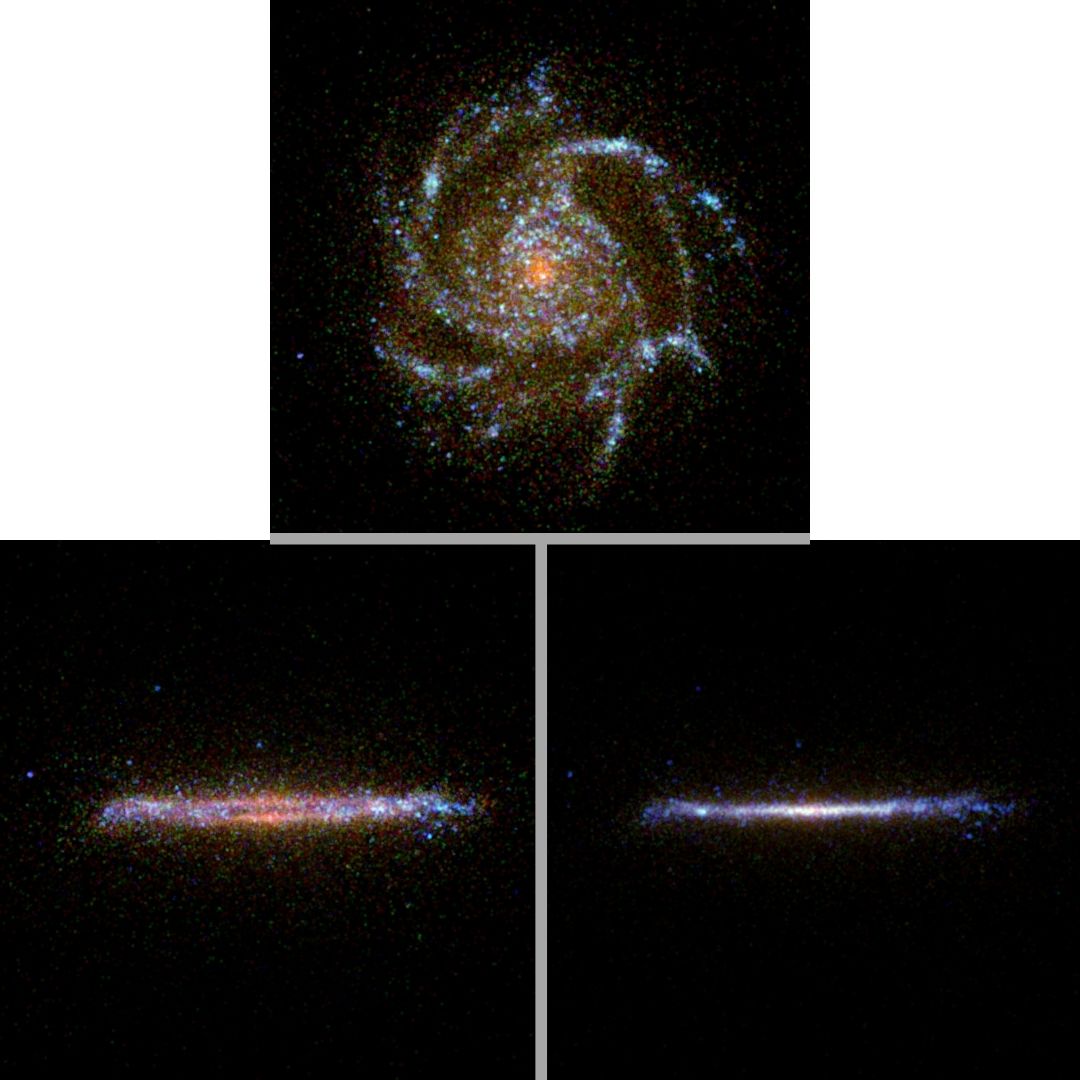A research team from the Institute for Theoretical and Experimental Astronomy (IATE), in collaboration with the Numerical Astrophysics Group in Trieste (Italy), developed computational simulations to study how dust in galaxies evolves.
By Facundo Rodriguez
facundo.rodriguez@unc.edu.ar
Galaxies are made up of large amounts of stars, gas and dust. Each of these components plays an important role in their evolution. However, the dust has received much less attention, mainly because of studies that try to explain how galaxies form and what changes they undergo over time. This has begun to change recently with the increase in computing power, which allows increasingly complex simulations to be carried out and dust to be incorporated.
The dust found in galaxies consists of very small solid particles: the largest ones are ten times smaller in diameter than a human hair. However, the relatively large amounts present in galaxies can affect observations by, for example, absorbing ultraviolet light and modifying the signals we get from these galaxies.

Among other qualities, these particles can incorporate metals, and different processes can modify their size. These are some of the features that make dust a complex and interesting component, mainly because it influences the evolution of galaxies.
Realistic dust modelling
"It is often assumed that the dust in other galaxies is similar to that in the Milky Way. However, we know that this is not true because there are galaxies with different properties, and it is to be expected that, for example, in the early Universe, their dust content will be different," explains Gian Luigi Granato, a corresponding researcher at IATE and the Italian National Institute of Astrophysics (INAF), who has done a lot of work on the formation and evolution of galaxies. He adds: "There are few studies that analyse the effects of dust using simulations; some have been done on clusters of galaxies, but this is the first study to analyse individual galaxies in a cosmological context.
This team incorporated the dust and its properties into a model that simulates the evolution of a galaxy similar to our own. This incorporation takes into account the processes that cause the dust to undergo modifications. For example, when dust grains collide at high velocities, they are destroyed and produce smaller particles; if they meet at low velocities, they coalesce and form larger grains. They may also be eroded by ions or attach themselves to other atoms in the medium. All these processes will mainly affect the size of the dust particles. And another relevant aspect studied by this team is the chemical composition of the dust and its modifications when metals are incorporated.
Antonela Taverna, a postdoctoral fellow at IATE who participated in this research, says that "until now the simulations that have been done for this type of study have been very simple; this work adds a higher order of complexity and better reflects the physical processes involved in the dust".
Thanks to this joint research between IATE and the Trieste Observatory, state-of-the-art simulations could be used to explore the dust properties. This was facilitated by the LACEGAL (Latin American Chinese European Galaxy Formation Network) network, which enabled the researcher's exchange between the two institutions.
Results
By implementing dust into the simulations, the team was able to analyse its variation at different times as the galaxy evolves. Among the main results, they found that the particle sizes and metallicities vary.

"By incorporating the dust model into the simulations we saw that the properties of galaxies are modified, and this is not trivial, because we are showing that dust not only affects the light we receive from these objects but also their properties. At a basic level, for example, we measure that the gas and star content of the galaxy changes," says Cinthia Ragone, co-author of the paper and researcher at IATE, specialised in numerical simulations. She adds, "the better we can reproduce the properties of astrophysical dust, for example, their sizes and chemical composition, the better we can describe the properties of galaxies.
The dust modelling carried out in this work, published in Monthly Notices of the Royal Astronomical Society journal, was also compared with observational data. Strong agreement was found for the characteristics and distribution of the dust. This is all the more remarkable when one takes into account that many of the parameters used in the simulation come from laboratory determinations and that, being one of the first studies of this kind, it was not possible to predict that the results would match the observations so well.
Butterfly effect in simulations
To carry out this research, more than 100 simulations had to be carried out and, in doing so, they noticed that almost insignificant variations in the numerical calculations generated perceptible changes in the simulation results. As these variations cannot be completely avoided, this team ran the same simulations several times and worked with the averages of these simulations, to rule out that some of the observed effects were the consequence of something external to the processes they were studying.
Scientific publication |
| Dust evolution in zoom-in cosmological simulations of galaxy formation Autores | Gian Luigi Granato, Cinthia Ragone-Figueroa, Antonela Taverna, Laura Silva, Milena Valentini, Stefano Borgani, Pierluigi Monaco, Giuseppe Murante & Luca Tornatore |
